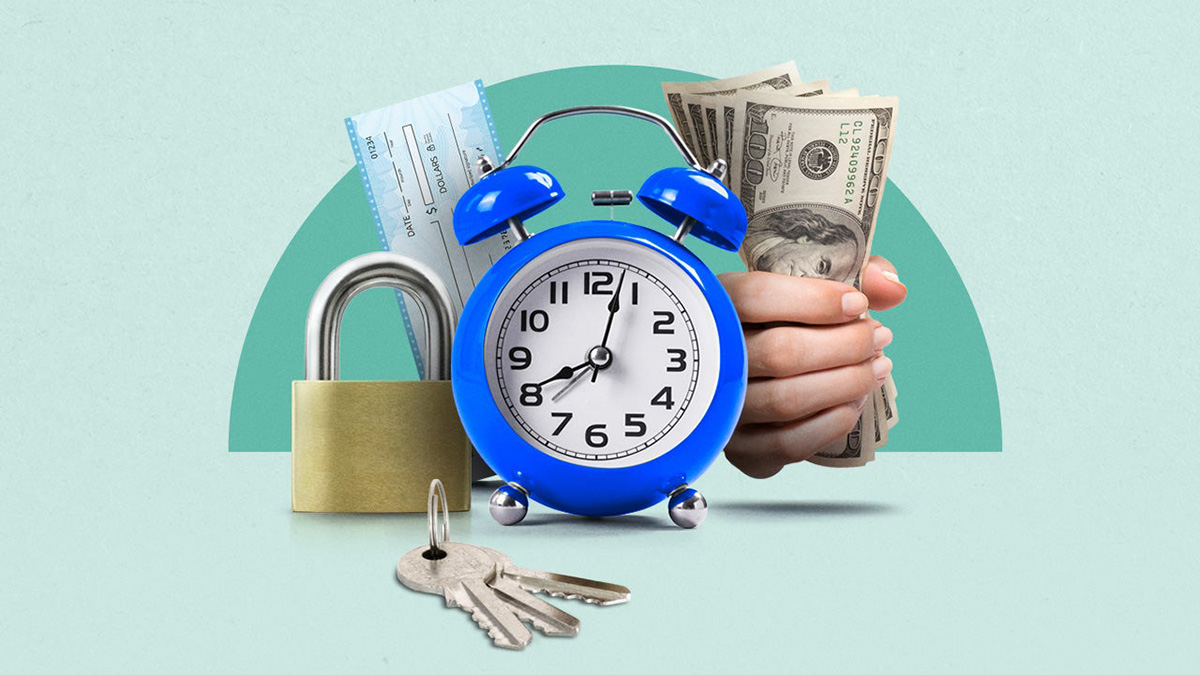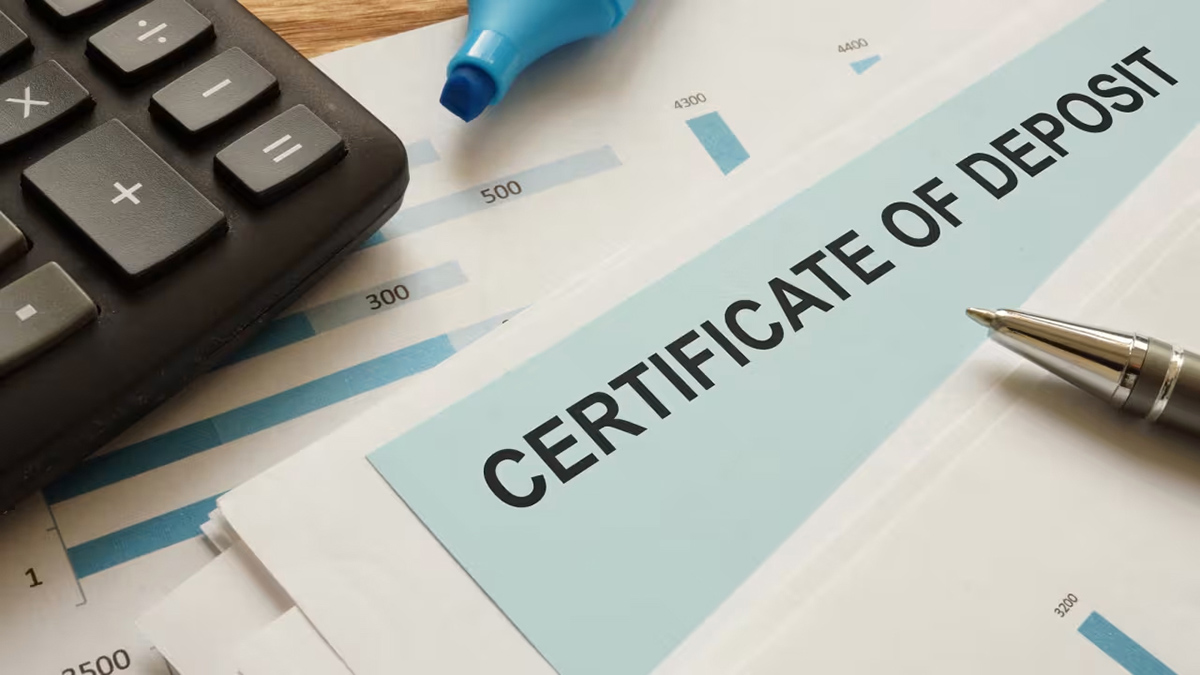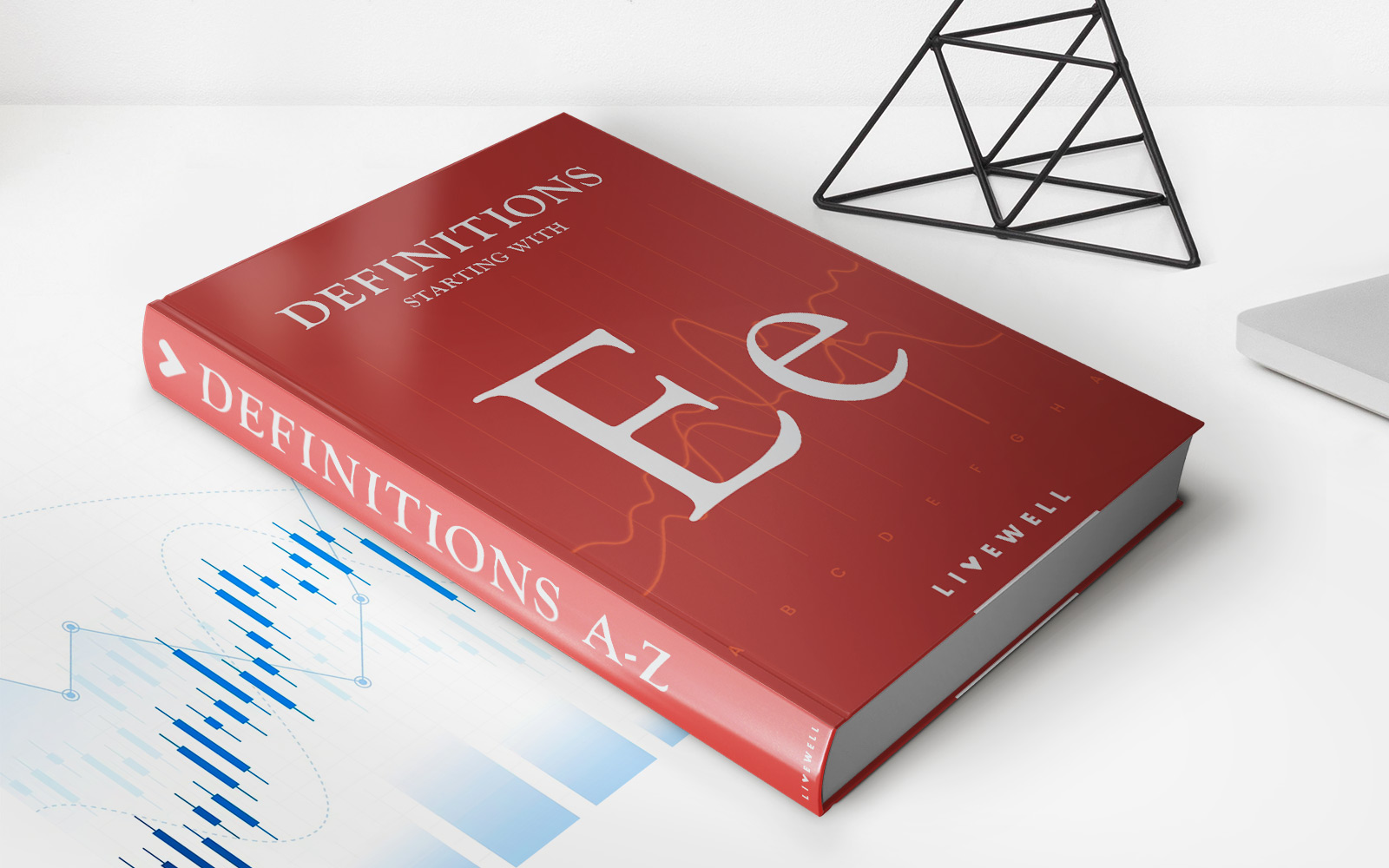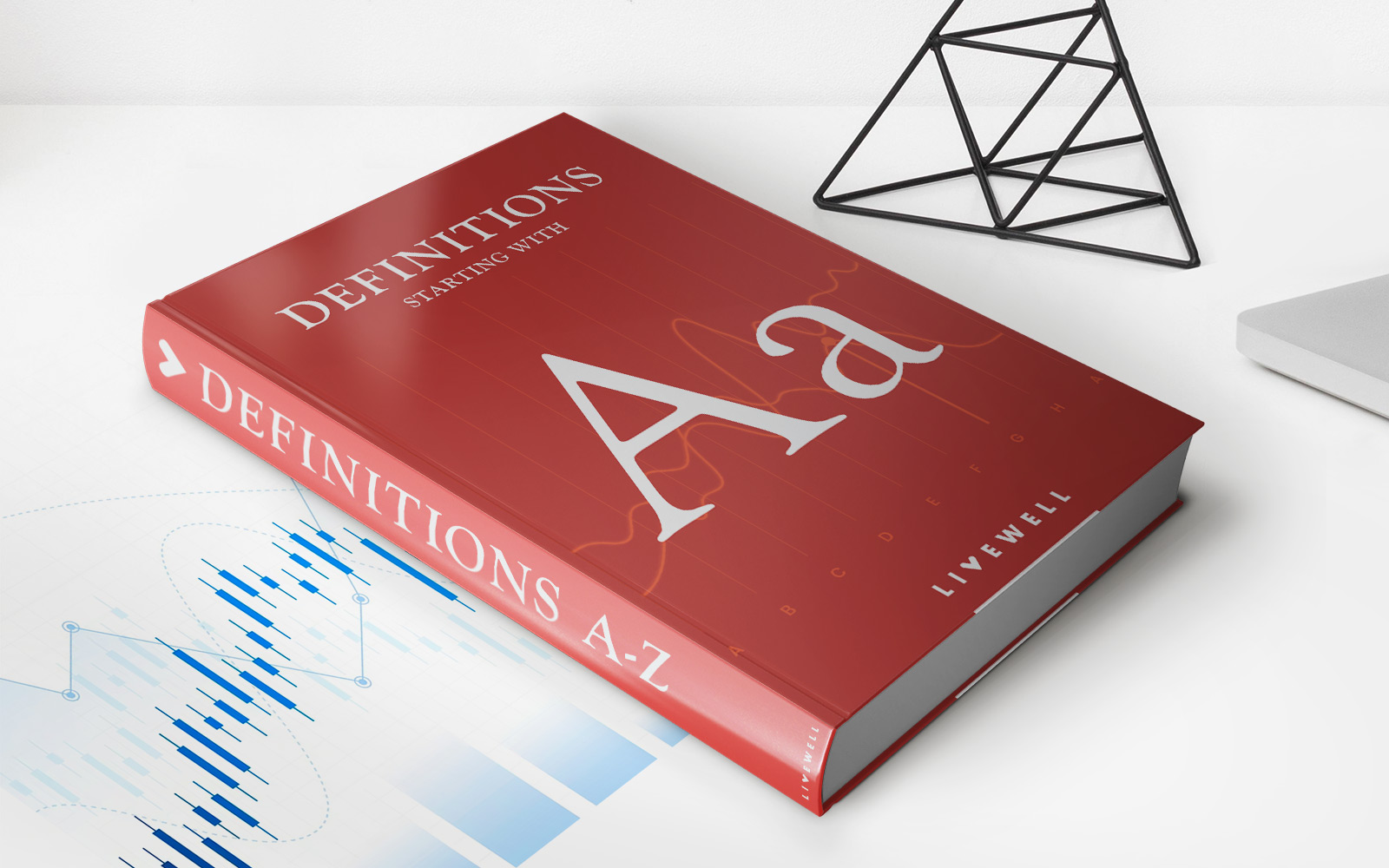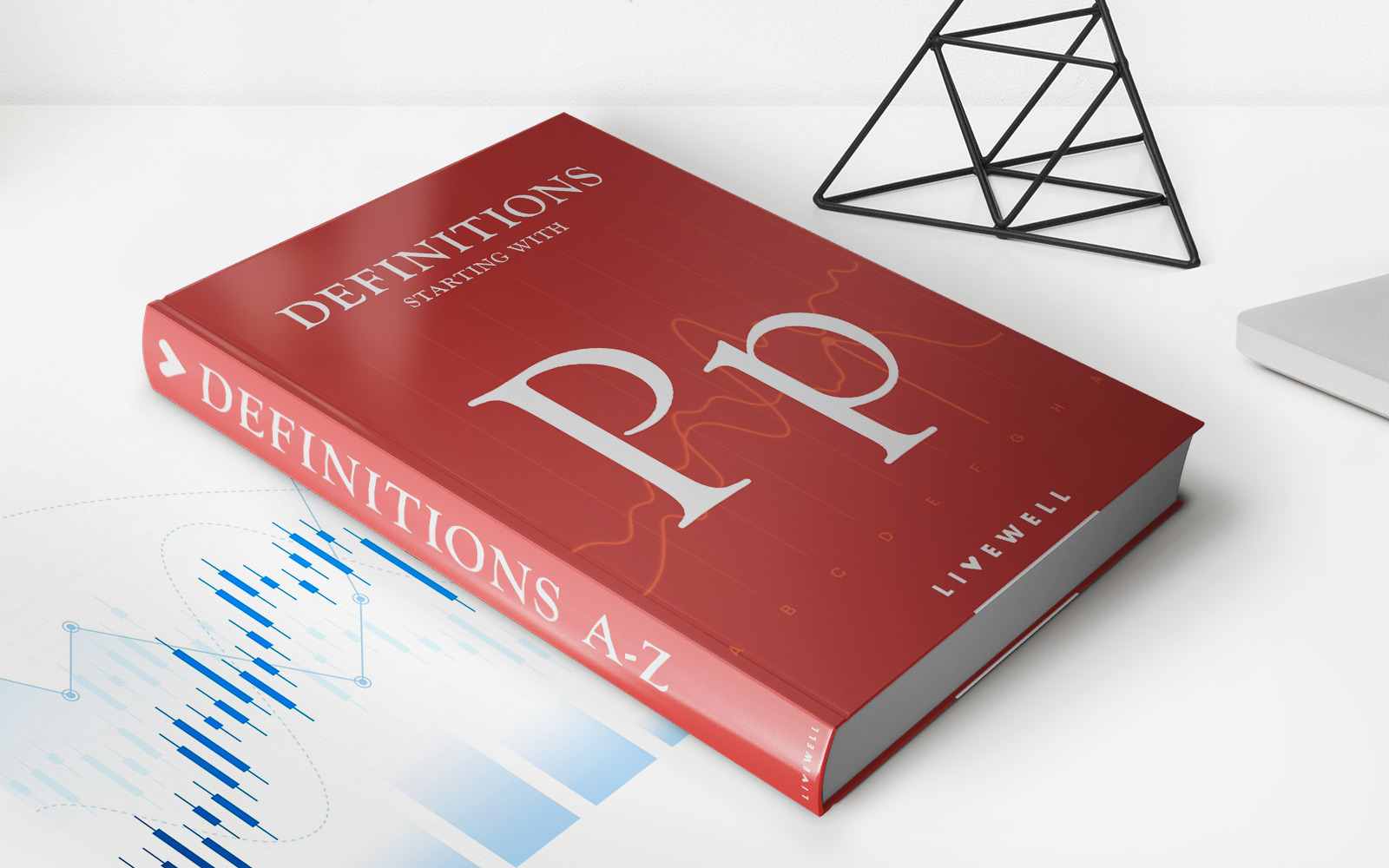

Finance
How To Make Money With Certificates Of Deposit
Modified: December 29, 2023
Discover how to make money with certificates of deposit in the finance industry. Maximize your returns and grow your wealth with this smart investment strategy.
(Many of the links in this article redirect to a specific reviewed product. Your purchase of these products through affiliate links helps to generate commission for LiveWell, at no extra cost. Learn more)
Table of Contents
- Introduction
- What are Certificates of Deposit (CDs)?
- Pros and Cons of Investing in CDs
- Steps to Make Money with Certificates of Deposit
- Researching and Choosing the Right CD
- Understanding CD Terms and Rates
- Opening a CD Account
- Strategies for Maximizing CD Returns
- Reinvesting or Withdrawing CD Funds
- Monitoring and Managing CD Investments
- Conclusion
Introduction
Certificates of Deposit (CDs) are a popular investment option for individuals looking to grow their money with minimal risk. CDs are offered by banks and credit unions and provide a safe and stable way to earn interest on your savings. Unlike regular savings accounts, CDs have a fixed term, typically ranging from a few months to several years, during which your money will be locked in and will earn a predetermined interest rate.
CDs offer a predictable and guaranteed return on investment, making them an attractive option for conservative investors or those who don’t want to expose their money to the volatility of the stock market. While CDs may not offer the same potential for high returns as riskier investments, they provide a secure way to preserve capital and earn a steady income.
In this article, we will explore how you can make money with Certificates of Deposit. We’ll discuss the pros and cons of investing in CDs, the steps involved in choosing and opening a CD account, strategies for maximizing your CD returns, and how to manage and monitor your CD investments effectively.
What are Certificates of Deposit (CDs)?
Certificates of Deposit, commonly known as CDs, are financial instruments offered by banks and credit unions. They are a type of investment where you deposit a certain amount of money for a specific period, and in return, the financial institution pays you a fixed interest rate. CDs come with a maturity date, which is the agreed-upon time when you can withdraw your initial deposit and accrued interest.
CDs are considered a low-risk investment option because they are insured by the Federal Deposit Insurance Corporation (FDIC) in the United States, up to certain limits. This guarantee makes CDs a secure and reliable choice for individuals who prioritize the preservation of their capital.
One of the key features of CDs is their fixed interest rates. Unlike other investment options like stocks or bonds, where returns may fluctuate, CDs offer a predetermined rate of return for the entire duration of the investment. This guarantees that you will earn a specific amount of interest over the agreed-upon period.
The tenure of CDs can vary, ranging from a few months to several years. Short-term CDs typically have lower interest rates, while longer-term CDs tend to offer higher rates. It’s important to carefully consider your investment goals and financial needs before choosing the length of the CD.
CDs also provide flexibility in terms of interest payments. Some CDs allow you to receive interest payments at regular intervals, such as monthly or quarterly, while others provide the option to accumulate interest until the maturity date.
When it comes to accessing your money before the maturity date, early withdrawal penalties may apply. These penalties can result in a reduction of the interest earnings or even the principal amount. Therefore, it’s crucial to carefully review the terms and conditions of a CD before investing.
In summary, Certificates of Deposit offer a secure and predictable investment option for individuals looking to grow their money with low risk. With fixed interest rates and a range of tenure options, CDs provide stability and a guaranteed return on investment.
Pros and Cons of Investing in CDs
Investing in Certificates of Deposit (CDs) has its advantages and disadvantages that you should consider before making a decision. Here are some pros and cons of investing in CDs:
Pros:
1. Security: CDs are considered a safe investment option because they are backed by the FDIC, providing insurance coverage up to certain limits. This makes them a low-risk option compared to other investments like stocks or bonds.
2. Predictable Returns: CDs offer fixed interest rates, meaning you know exactly how much interest you’ll earn over the term of the investment. This predictability is appealing for individuals who prefer stability.
3. Guaranteed Principal: With CDs, your principal investment is guaranteed. As long as you don’t withdraw funds before the maturity date, you will receive the full amount you initially deposited.
4. Flexibility: CD terms can range from a few months to several years, allowing you to choose the duration that aligns with your financial goals and liquidity needs.
5. Income Stream: If you opt for a CD with periodic interest payments, you can receive a steady income stream at regular intervals, which can be useful for budgeting or supplementing your cash flow.
6. Ease of Access: CDs are widely available and can be opened with most financial institutions, including banks and credit unions. The application process is typically straightforward, making it convenient for investors.
Cons:
1. Lower Returns: Compared to riskier investments like stocks or bonds, CDs generally offer lower returns. While they provide stability, they may not provide the same potential for significant growth as other investment options.
2. Fixed Investment: Once you deposit your money into a CD, you can’t access it until the maturity date without potentially incurring penalties. This lack of liquidity can be a drawback if you need immediate access to your funds.
3. Interest Rate Risk: If you invest in a CD with a long-term duration and interest rates rise in the market, you may miss out on potentially higher returns. This is because your CD rate is locked in when you open the account.
4. Inflation Risk: Inflation erodes the purchasing power of your money over time. Since CDs offer fixed interest rates, if the inflation rate exceeds the interest rate, the real value of your returns may decrease.
5. Opportunity Cost: By tying up your funds in a CD, you may miss out on other investment opportunities that could provide higher returns in the long run.
6. Early Withdrawal Penalties: If you need to access your funds before the maturity date, you may face penalties, resulting in a reduction of the interest earned or even the principal amount.
It’s essential to weigh these pros and cons based on your individual financial situation, risk tolerance, and investment goals before deciding whether to invest in CDs.
Steps to Make Money with Certificates of Deposit
Investing in Certificates of Deposit (CDs) can be a straightforward way to grow your money over time. Here are the essential steps to follow in order to make money with CDs:
- Set Your Financial Goals: Determine what you want to achieve with your CD investment. Whether it’s saving for a down payment on a home, funding a college education, or generating passive income, having clear goals will help you make informed decisions throughout the process.
- Research and Compare: Take the time to research different financial institutions that offer CDs. Compare their interest rates, terms, and any additional features they may offer. Look for institutions with competitive rates and a solid reputation.
- Choose the Right CD: Select a CD that aligns with your financial goals and risk tolerance. Consider the term length that best suits your needs and whether you want a fixed-rate or variable-rate CD. Fixed-rate CDs have a set interest rate throughout the term, while variable-rate CDs may fluctuate with changes in market conditions.
- Read the Fine Print: Thoroughly review the terms and conditions of the CD before committing. Pay attention to any early withdrawal penalties, account fees, and whether the CD automatically renews at maturity. Make sure you fully understand the terms of the investment.
- Open Your CD Account: Contact the financial institution you’ve chosen and follow their process for opening a CD account. This usually involves providing personal identification information, completing the necessary paperwork, and depositing the funds into the account.
- Track the Maturity Date: Keep a record of your CD’s maturity date. This is the point at which you can withdraw your initial deposit and any interest earned. Mark your calendar or set reminders to ensure you don’t miss the date and incur any penalties.
- Monitor Your Investment: Stay informed about changes in interest rates and evaluate the performance of your CD regularly. This will help you assess whether it’s still the best investment option for your financial goals. Consider reinvesting the proceeds into another CD or exploring alternative investment opportunities.
- Reinvest or Withdraw: When your CD matures, decide whether you want to reinvest the funds in a new CD or withdraw them. If you choose to reinvest, reassess your financial goals and market conditions to choose the best CD option. If you opt to withdraw, consider your short-term and long-term financial needs.
Remember, making money with CDs requires a disciplined approach and a long-term investment mindset. By following these steps and making informed decisions, you can effectively grow your money with Certificates of Deposit.
Researching and Choosing the Right CD
Researching and choosing the right Certificate of Deposit (CD) is crucial to maximize your returns and align with your financial goals. Here are some steps to help you find the most suitable CD for your needs:
- Know Your Financial Goals: Determine your reasons for investing in a CD. Are you looking to save for a specific milestone, generate passive income, or preserve capital? Having a clear understanding of your goals will guide your decision-making process.
- Compare CD Rates: Research and compare CD rates offered by different banks and credit unions. Look for institutions that offer competitive rates, taking into account both short-term and long-term CDs. Remember that longer-term CDs usually have higher rates, but they also tie up your money for a longer period.
- Evaluate the Terms: Review the terms and conditions of each CD carefully. Consider factors such as the minimum deposit requirements, maturity date, and any penalties for early withdrawal. It’s important to find a CD that suits your financial situation and liquidity needs.
- Consider CD Types: Explore different types of CDs, such as traditional fixed-rate CDs, variable-rate CDs, or specialty CDs. Traditional fixed-rate CDs have a predetermined interest rate for the duration of the investment. Variable-rate CDs, on the other hand, may adjust periodically based on market conditions. Specialty CDs may offer unique features or benefits, such as step-up rates or bonus interest.
- Assess the Financial Institution: Research the financial institution offering the CD. Look into their reputation, stability, and the quality of their customer service. Check if they are FDIC-insured or if they possess any other relevant certifications. It’s important to choose a trustworthy and reliable institution for your investment.
- Consider CD Laddering: CD laddering is a strategy where you invest in multiple CDs with staggered maturity dates. This allows you to have access to a portion of your investment regularly while still taking advantage of higher interest rates on longer-term CDs. Consider incorporating CD laddering into your strategy to balance liquidity and returns.
- Seek Professional Advice: If you are uncertain or overwhelmed by the options, consider consulting a financial advisor. A professional can provide personalized guidance based on your financial situation, risk tolerance, and investment goals.
By conducting thorough research and considering these factors, you can find the CD that best fits your needs and investment objectives. Remember to review your CD portfolio periodically and make adjustments as needed to optimize your returns and meet your financial goals.
Understanding CD Terms and Rates
When investing in Certificates of Deposit (CDs), it’s essential to understand the various terms and rates associated with them. This knowledge will help you make informed decisions and maximize your returns. Here’s what you need to know about CD terms and rates:
- Maturity Date: The maturity date is the agreed-upon time when your CD reaches its full term. It is the point at which you can withdraw your initial deposit and any accrued interest without incurring penalties. CD terms can range from a few months to several years, so choose a term that aligns with your financial objectives.
- Fixed vs. Variable Rates: CDs can offer either fixed or variable interest rates. With fixed-rate CDs, the interest rate remains constant throughout the term of the investment. This ensures a predictable return on your investment. Variable-rate CDs, on the other hand, have interest rates that fluctuate based on market conditions. While variable rates may potentially offer higher returns, they also come with increased uncertainty.
- Annual Percentage Yield (APY): APY represents the annualized rate of return on your investment, taking into account compounding interest. It reflects the total earnings you can expect from the CD in one year, including both the interest rate and the frequency of compounding.
- Minimum Deposit Requirements: Financial institutions may set minimum deposit requirements for their CDs. This is the minimum amount of money you need to invest to open a CD account. Ensure that you meet these requirements before considering a specific CD.
- Interest Payment Frequency: CDs typically offer two options for interest payments: compound interest or periodic interest payments. Compound interest means that the interest earned is added to the principal, allowing it to grow over time. Periodic interest payments, on the other hand, provide regular income at specified intervals, such as monthly, quarterly, or annually. Choose the option that aligns with your financial needs and goals.
- Early Withdrawal Penalties: CDs are designed to be held until maturity, and withdrawing funds before the maturity date often results in penalties. These penalties can vary among financial institutions, but they generally reduce the interest earned or, in some cases, even dip into the principal amount. Familiarize yourself with the early withdrawal penalties associated with the CD you choose.
- Renewal Options: Prior to the maturity date, some CDs offer the option to renew automatically. This means that if you don’t take any action, the CD will roll over into another CD with a similar term. Make sure to understand the renewal terms and review your investment strategy accordingly to ensure it aligns with your goals.
By understanding CD terms and rates, you can make informed decisions about the duration, interest rate structure, and withdrawal options that best suit your financial goals. It’s important to carefully evaluate these factors before investing in a CD to ensure that you maximize your returns and meet your specific needs.
Opening a CD Account
Opening a Certificate of Deposit (CD) account is a straightforward process that can be done with most financial institutions. Here are the steps to follow when opening a CD account:
- Research Financial Institutions: Research and compare different banks or credit unions that offer CDs. Look for institutions that have a good reputation, competitive rates, and favorable terms. Consider factors such as customer reviews, convenience, and additional features or benefits they may offer.
- Contact the Financial Institution: Once you’ve selected a financial institution, reach out to them to inquire about opening a CD account. This can be done through their website, over the phone, or by visiting a branch in person.
- Provide Required Documentation: The financial institution will require certain documentation to open a CD account. This typically includes proof of identification, such as a valid government-issued ID (e.g., driver’s license, passport), Social Security number or taxpayer identification number, and proof of address (e.g., utility bill, bank statement).
- Choose the CD Type: Specify the type of CD you wish to open, such as a traditional fixed-rate CD or a variable-rate CD. Consider your investment goals, risk tolerance, and desired term length when making this decision.
- Deposit Funds: Provide the initial deposit amount required to open the CD account. The financial institution will specify the minimum deposit requirement, which can vary depending on the institution and the type of CD.
- Review and Sign the Account Agreement: Carefully review the account agreement provided by the financial institution. This agreement outlines the terms and conditions of the CD, including the interest rate, maturity date, withdrawal penalties, and any other relevant details. Once satisfied, sign the agreement to confirm your understanding and acceptance.
- Receive Confirmation and Account Details: After completing the account opening process, you will receive confirmation of your CD account. This may come in the form of an account statement or an electronic confirmation. Keep this information safe for future reference.
It’s important to note that the exact steps and requirements may vary slightly depending on the specific financial institution. Some institutions may offer the option to open a CD online, while others may require an in-person visit to a branch. Be sure to follow the instructions provided by the financial institution and seek assistance from their customer support if needed.
By following these steps, you can successfully open a CD account and begin your journey towards growing your money through a secure and reliable investment option.
Strategies for Maximizing CD Returns
Certificates of Deposit (CDs) offer a stable and secure way to grow your money, but there are strategies you can employ to maximize your returns. Here are some strategies to consider:
- Shop Around for the Best CD Rates: Compare CD rates offered by different financial institutions to find the highest rates available. Even a slight difference in interest rates can have a significant impact on your returns over time.
- Consider CD Laddering: CD laddering is a strategy that involves spreading your investment across multiple CDs with varying terms. By staggering the maturity dates, you ensure that a portion of your investment is accessible at regular intervals. This strategy allows you to take advantage of potentially higher interest rates on longer-term CDs while still maintaining liquidity.
- Take Advantage of Promotional or Special Rate CDs: Financial institutions occasionally offer promotional or special rate CDs as part of their marketing campaigns. These CDs often come with higher interest rates or additional benefits. Keep an eye out for these opportunities to maximize your returns.
- Consider Callable CDs: Callable CDs offer higher interest rates than traditional CDs but come with a risk. The bank has the option to “call back” the CD before the maturity date, potentially cutting your investment short. Evaluate the risks and benefits of callable CDs before investing.
- Reinvest the Interest: Instead of taking the interest payments from your CD, consider reinvesting them back into your CD or into a new CD with a higher interest rate. Reinvesting can help compound your earnings and accelerate your wealth accumulation.
- Monitor the Interest Rate Environment: Keep an eye on changes in interest rates. If rates are expected to rise, consider shorter-term CDs so that you can reinvest in higher-yielding CDs when they mature. Conversely, if rates are expected to decline, locking in longer-term CDs can provide stability and higher returns.
- Diversify Your Investment Portfolio: While CDs provide stability and guaranteed returns, it’s essential to diversify your investment portfolio to maximize overall returns. Consider allocating a portion of your assets to other investment vehicles, such as stocks, bonds, or real estate, to achieve a balanced portfolio and potentially higher long-term returns.
- Stay Informed: Keep yourself updated on market trends, economic indicators, and changes in financial regulations. By staying informed, you can make more informed decisions and take advantage of opportunities to optimize your CD investments.
Remember that CDs are a low-risk investment option, and while they may not offer the same potential for high returns as riskier investments, they provide a stable way to preserve capital and earn a consistent income. By applying these strategies, you can maximize your CD returns and make the most of your investment.
Reinvesting or Withdrawing CD Funds
When a Certificate of Deposit (CD) reaches its maturity date, you have the option to either reinvest the funds or withdraw them. Here are some factors to consider when deciding whether to reinvest or withdraw your CD funds:
- Financial Goals: Evaluate your current financial goals and determine whether they align with the funds you have in your CD. If you have long-term goals, such as retirement or purchasing a home in the distant future, reinvesting the funds into a new CD may be beneficial. However, if you have more immediate financial needs or short-term goals, withdrawing the funds could be more appropriate.
- Market Conditions: Assess the current interest rate environment. If rates have increased significantly since you initially invested in the CD, it may be advantageous to withdraw the funds and reinvest in a higher-yielding CD. Conversely, if rates have declined, you may prefer to reinvest in a longer-term CD to lock in the higher rate from your initial investment.
- Liquidity Needs: Consider your liquidity needs when deciding whether to reinvest or withdraw CD funds. If you anticipate requiring the funds in the near future for emergencies or other expenses, it may be more prudent to withdraw the funds. However, if you have sufficient liquid assets and can afford to keep the funds invested, reinvesting them can help you continue growing your savings.
- Penalties: Be aware of any penalties associated with early withdrawals or liquidating your CD before the maturity date. The penalties can vary depending on the financial institution and the specific terms of the CD. Take into account these penalties when determining whether it is worth withdrawing the funds.
- Diversification: Consider the overall diversification of your investment portfolio. If your portfolio is heavily weighted towards CDs, you may want to diversify by withdrawing the funds and investing in other asset classes such as stocks, bonds, or real estate. Diversification can help manage risk and potentially increase overall returns.
- Market Opportunities: Assess the investment opportunities available to you at the time your CD matures. If there are promising investment options with higher potential returns, it may be wise to withdraw the funds and allocate them accordingly. However, be sure to thoroughly research and understand the risks associated with any new investments.
Ultimately, the decision to reinvest or withdraw your CD funds depends on your individual financial circumstances, goals, and risk tolerance. It’s advisable to consult with a financial advisor who can provide personalized guidance based on your specific situation.
Remember that Certificates of Deposit can provide stability and guaranteed returns, but it’s important to regularly review and adjust your investment portfolio to ensure it remains aligned with your long-term financial objectives.
Monitoring and Managing CD Investments
Monitoring and managing your Certificate of Deposit (CD) investments is crucial to ensure that you are making the most of your investment. Here are some key steps to consider:
- Track Maturity Dates: Keep a record of the maturity dates for all your CDs. Mark them on your calendar or set reminders to ensure that you don’t miss any opportunities to reinvest or withdraw your funds.
- Review CD Terms: Periodically review the terms and conditions of your CDs. Understand the interest rate, term length, and any penalties associated with early withdrawals or other actions. Familiarize yourself with the details to make informed decisions about your investments.
- Interest Rate Environment: Stay updated on changes in interest rates. Monitor the market conditions and evaluate whether the rates are favorable for reinvesting or withdrawing your CD funds. This information can help you make decisions that align with your financial goals and optimize your returns.
- Consider Reinvestment Options: When a CD matures, explore different reinvestment options. Research current CD rates and terms offered by various financial institutions to find the most competitive rates. Compare the benefits of renewing your CD with the potential advantages of switching to a different institution.
- Review Overall Investment Strategy: Continuously assess your investment portfolio and consider the role CDs play within it. Ensure that your CD investments align with your long-term financial goals. If necessary, rebalance your portfolio by reallocating funds to other investments that offer higher potential returns or greater diversification.
- Review Your Financial Needs: Regularly evaluate your financial needs and consider whether your CD investments are still suitable. If your circumstances change or you have specific financial goals, such as a major purchase or a life event, adjust your CD investments accordingly.
- Consider CD Laddering: Implement a CD laddering strategy to maintain liquidity while earning potentially higher returns. As each CD matures, reinvest the funds into a new CD with a longer term or a higher interest rate. This approach ensures a steady flow of income while taking advantage of different interest rate cycles.
- Take Advantage of CD Rollovers: If your financial institution offers automatic CD rollovers, review the terms and rates before they occur. Evaluate whether renewing the CD is still the best course of action or if there are more favorable options available elsewhere.
- Engage with a Financial Advisor: Consider consulting with a financial advisor who can provide personalized advice based on your financial situation, risk tolerance, and investment goals. They can assist with monitoring your CD investments and provide guidance on managing your overall portfolio.
By actively monitoring and managing your CD investments, you can ensure that you are making informed decisions and taking advantage of opportunities to optimize your returns. Regularly assess your financial goals, market conditions, and investment strategy to make adjustments as needed and achieve your long-term financial objectives.
Conclusion
Certificates of Deposit (CDs) provide a secure and reliable investment option for individuals looking to grow their money with minimal risk. With their fixed interest rates and guaranteed returns, CDs offer stability and a predictable income stream. While they may not provide the potential for high returns like riskier investments, CDs are an excellent choice for those who prioritize capital preservation and consistent earnings.
In this article, we discussed the key aspects of investing in CDs. We explored what CDs are, their pros and cons, and the steps involved in making money with CDs. From researching and choosing the right CD to understanding terms and rates, opening a CD account, and managing your investments, we covered all the necessary information to help you navigate the world of CD investing.
To maximize your CD returns, we discussed strategies such as shopping around for the best rates, considering CD laddering, and taking advantage of promotional or special rate CDs. We also emphasized the importance of monitoring and managing your CD investments, including tracking maturity dates, reviewing CD terms, and staying informed about the interest rate environment.
Whether you choose to reinvest or withdraw your CD funds, it is crucial to align your decision with your financial goals, market conditions, and liquidity needs. Regularly reviewing your CD portfolio and considering diversification can help you optimize your returns and manage risk effectively.
Remember, CD investments should be part of a comprehensive investment strategy that aligns with your financial objectives and risk tolerance. They can provide a stable foundation in your investment portfolio, complemented by other asset classes that offer potential for growth.
As with any investment, it is advisable to consult with a financial advisor who can provide personalized guidance tailored to your specific needs. They can help you assess your financial goals, evaluate market conditions, and make informed decisions about your CD investments.
Overall, Certificates of Deposit can be a valuable addition to your investment portfolio, offering a secure way to grow your money while preserving capital. By understanding the ins and outs of CD investments and employing sound investment strategies, you can make the most of your CD investments and work towards achieving your long-term financial goals.

